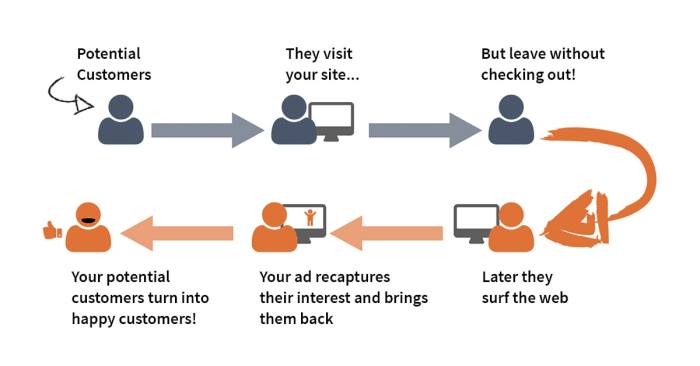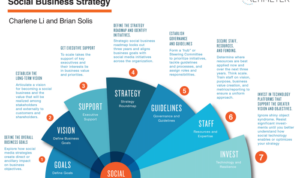Retargeting Strategies for E-commerce dives into the world of targeted marketing, offering insights and techniques to boost online sales and engagement. From understanding the basics to implementing advanced tactics, this guide is your go-to resource for maximizing your e-commerce success.
Introduction to Retargeting Strategies for E-commerce

Retargeting strategies in the realm of e-commerce involve targeting customers who have previously visited a website but did not make a purchase. Through the use of cookies and other tracking tools, these strategies allow businesses to display personalized ads to these potential customers as they browse other sites, encouraging them to return and complete a purchase.
Importance of Retargeting Strategies for E-commerce Businesses
Retargeting strategies play a crucial role in increasing conversion rates and maximizing the ROI for e-commerce businesses. By reminding customers of products they have shown interest in, businesses can stay top of mind and increase the likelihood of a successful sale. This personalized approach helps build brand loyalty and fosters repeat purchases, ultimately driving revenue growth.
- Retargeting strategies help to reconnect with potential customers who have already expressed interest in the products or services offered by an e-commerce business.
- By keeping the brand in front of the customer through targeted ads, businesses can significantly improve conversion rates and overall sales performance.
- Effective retargeting strategies can also help reduce cart abandonment rates and encourage customers to complete their purchase, leading to increased revenue and profitability.
Examples of Successful E-commerce Businesses Utilizing Retargeting Strategies
E-commerce giants like Amazon and eBay have mastered the art of retargeting, leveraging user behavior data to deliver personalized ads that entice customers to revisit their platforms and make purchases.
Other notable examples include fashion retailer ASOS, which effectively uses retargeting ads to showcase products that customers have viewed or added to their cart but haven’t bought yet. This targeted approach has proven to be instrumental in driving sales and increasing customer engagement.
Types of Retargeting Strategies: Retargeting Strategies For E-commerce
Retargeting strategies are vital for e-commerce businesses looking to re-engage potential customers who have shown interest in their products or services. There are several types of retargeting strategies commonly used in the industry, each serving a specific purpose in reaching out to these potential customers.
Display Retargeting
Display retargeting involves showing ads to users who have previously visited your website but did not make a purchase. These ads are displayed on other websites they visit, reminding them of your products or services. For example, if a user looks at a pair of shoes on your website but doesn’t buy them, they may see ads for those shoes on other sites they browse.
Search Retargeting
Search retargeting targets users based on the s they have searched for online. For instance, if a user searches for “best running shoes” and visits your website but leaves without making a purchase, search retargeting allows you to show them ads related to running shoes even when they are on other websites.
Social Media Retargeting
Social media retargeting involves targeting users on social media platforms who have interacted with your brand in some way, such as liking a post or visiting your profile. By showing them ads on platforms like Facebook, Instagram, or Twitter, you can remind them of your products or services and encourage them to make a purchase.
Setting Up Retargeting Campaigns

Setting up retargeting campaigns for e-commerce involves several key steps to ensure success. By following these essential guidelines, you can reach your target audience effectively and optimize your ad creatives for better retargeting results.
Identifying the Target Audience
To set up a successful retargeting campaign, it is crucial to identify your target audience accurately. Here’s how you can do it:
- Utilize website analytics: Use tools like Google Analytics to gather data on your website visitors. Identify key demographics, interests, and behaviors to create detailed customer profiles.
- Segment your audience: Divide your audience into smaller segments based on their behavior on your website. This will allow you to tailor your retargeting ads to each specific group.
- Use customer lists: Upload customer lists or email lists to target existing customers or leads who have already shown interest in your products.
Optimizing Ad Creatives
Optimizing your ad creatives is essential for attracting the attention of your target audience and driving conversions. Here are some tips to improve your ad creatives for better retargeting results:
- Create compelling visuals: Use eye-catching images or videos that grab the viewer’s attention and showcase your products effectively.
- Write engaging copy: Craft persuasive copy that highlights the benefits of your products and encourages viewers to take action.
- A/B test your creatives: Test different ad variations to see which ones perform best with your target audience. Use this data to refine your creatives and improve their effectiveness over time.
Measuring the Success of Retargeting Strategies
When it comes to measuring the success of retargeting strategies in e-commerce, it is essential to track key performance indicators (KPIs) to determine the effectiveness of your campaigns.
Key Performance Indicators (KPIs)
Some important KPIs to consider when measuring the success of retargeting strategies include:
- Conversion Rate: Measure the percentage of users who completed a desired action, such as making a purchase, after being retargeted.
- Click-Through Rate (CTR): Track the percentage of users who clicked on your retargeting ads to revisit your site.
- Return on Ad Spend (ROAS): Calculate the revenue generated from your retargeting campaigns compared to the amount spent on advertising.
- Cost Per Acquisition (CPA): Determine the cost of acquiring a customer through retargeting efforts.
Importance of A/B Testing, Retargeting Strategies for E-commerce
A/B testing is crucial in evaluating the effectiveness of retargeting campaigns as it allows you to compare different ad creatives, messaging, or targeting strategies to see which performs better. By running A/B tests, you can optimize your campaigns for maximum impact and ROI.
Tools and Platforms for Tracking and Analysis
There are several tools and platforms available to help e-commerce businesses track and analyze the performance of their retargeting campaigns. Some popular options include:
- Google Analytics: Provides detailed insights into user behavior, conversions, and campaign performance.
- Facebook Ads Manager: Allows you to monitor the performance of your Facebook retargeting ads and make adjustments as needed.
- Adroll: Offers retargeting solutions with advanced targeting capabilities and performance tracking tools.
- Optimizely: Enables A/B testing for optimizing ad creatives and landing pages to improve retargeting campaign results.



